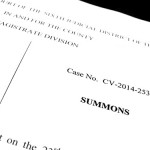In what I would like to be a regular feature, I have provided a summary of opinions in the last week or so that may interest Maryland tort attorneys. Maryland opinions are important, but I think reading opinions from other jurisdictions also give a better understanding of the arguments and issues in areas of unsettled law in Maryland or wherever you are practicing. Half of the issues that come up in a case, during discovery or at trial, are issues of first impression.  Reading case law formed elsewhere on personal injury issues helps lawyers not only understand the arguments they might want to bring, but it also helps spot issues in the first place.
Reading case law formed elsewhere on personal injury issues helps lawyers not only understand the arguments they might want to bring, but it also helps spot issues in the first place.
With that pious, self-referential speech now complete, here are the opinions:
- Bad faith claim in Alaska fails











